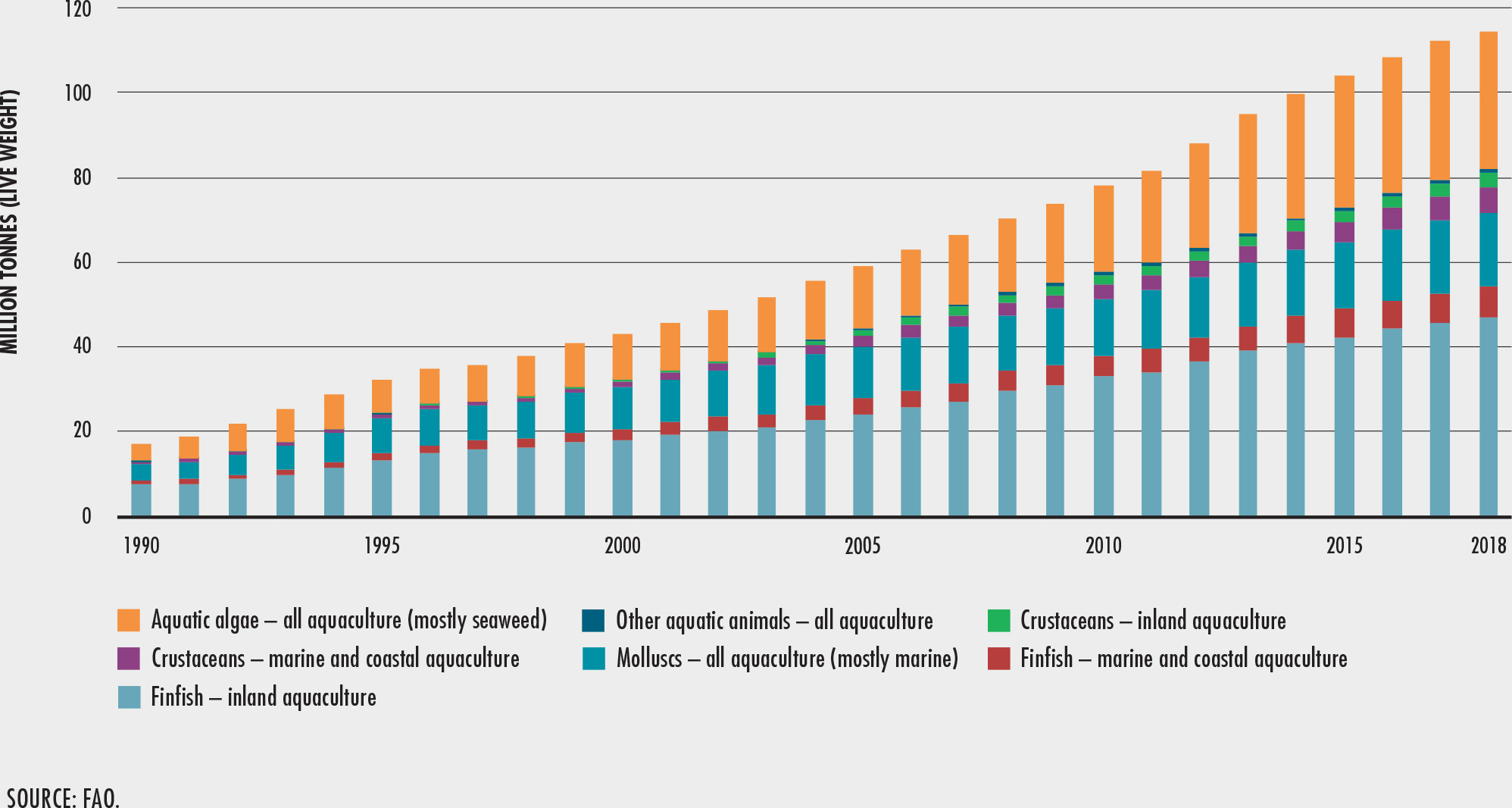Introduction to Aquaculture
Introduction to Aquaculture
Aquaculture has been practised for centuries and even millennia. It was first documented in China and Egypt around 500 BC. It has been practised in various guises since, from farming carp in rudimentary ponds, to enclosing lagoons and feeding up the fish, to rearing fish in ponds, tanks and pens. Similar to agriculture it has evolved over the centuries into the modern aquaculture we have today, which tends to be more technical and more intensive.
The FAO defines aquaculture as
the farming of aquatic organisms in both coastal and inland areas involving interventions in the rearing process to enhance production.
Aquaculture is the farming of aquatic organisms, of both animals (including fish, molluscs, crustaceans) and aquatic plants (including seaweeds and freshwater macrophytes). Farming implies some form of intervention in the rearing process to enhance production, such as regular stocking, feeding, protection from predators, etc. Farming also implies individual or corporate ownership of the stock being cultivated. There is an ownership of the stock throughout the rearing period, unlike fisheries.
We are probably all familiar, in some way, with the farming of fish in tanks, ponds or sea-pens; the growing of shellfish in structures on the sea-shore or in the water, or the growing of shrimp in ponds. This is what aquaculture is, simply farming in water.
According to the FAO, global aquaculture production has risen by 527% from 1990 to 2018, and it is the worlds fastest growing food production sector. World aquaculture production reached over 110 million tonnes in live weight in 2018, an all-time high, with a total farm-gate sale value in the region of €220 billion!

The total production consisted of approx.:
- 82 million tonnes of aquatic animals, and
- 32 million tonnes of aquatic algae.
- In 2018, inland aquaculture accounting for about 60% of the world’s farmed food fish production.
- About 20 million people are employed in aquaculture globally. To put that in perspective, global fisheries is about 40 million employees.
- Currently, over 500 species are farmed around the world. Asia dominates the production, accounting for 89%. Europe is a small player globally. China is the biggest aquaculture producer.
With the growth in global population, expansion of the fish-consuming middle class, and growing demand for quality protein, it is likely this expansion will continue into the future. Currently, more than half the seafood eaten worldwide comes from aquaculture, and this trend is set to continue.
You can find up to date aquaculture production parameters on the FAO website. Visit the Reference Section of this course for FAO aquaculture documents and the link to the FAO website.
